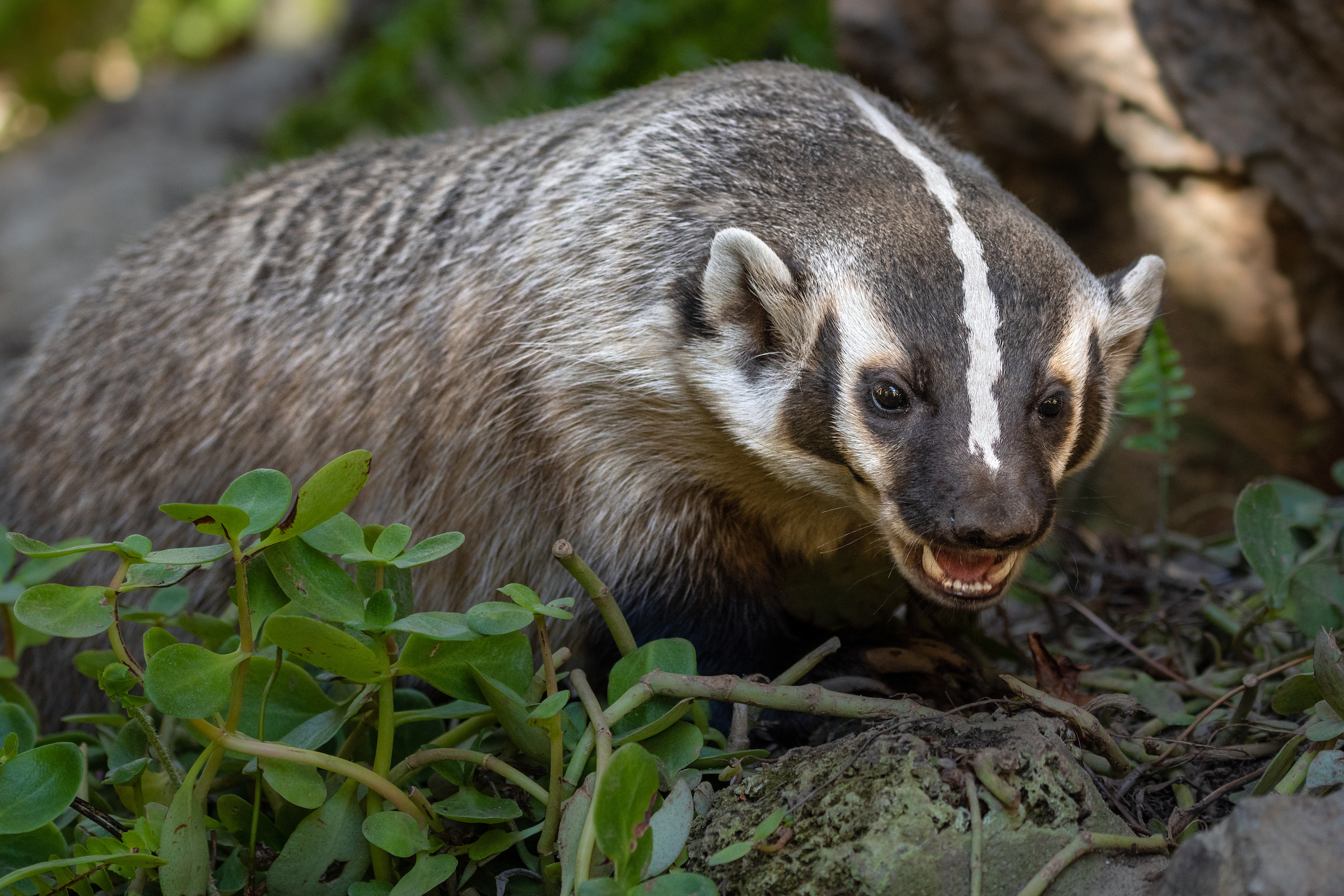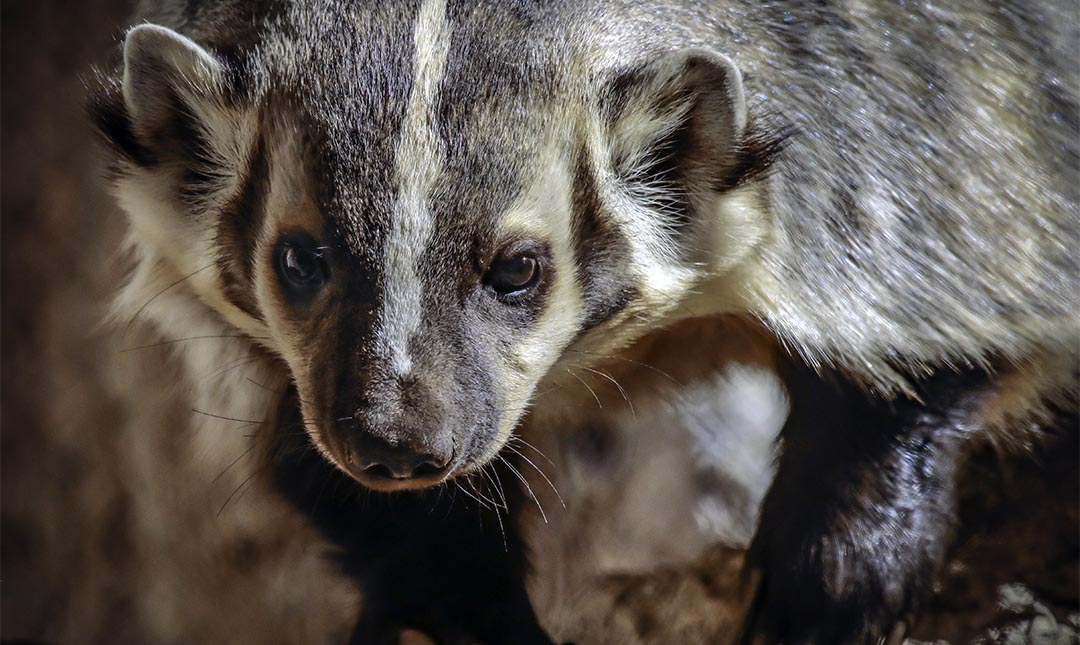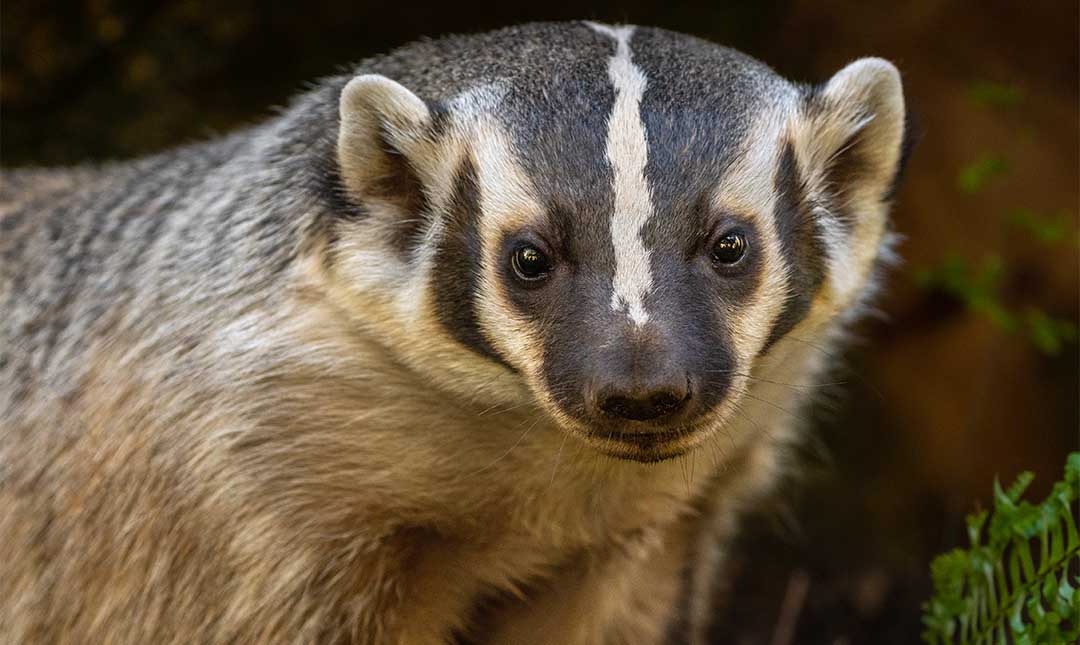About
Badgers have a fierce reputation. Solitary animals, they will aggressively defend themselves against much larger predators including coyotes, bears, mountain lions, and golden eagles. Enthusiastic diggers, their specialized front feet are equipped with long, sharp claws and their shovel-like back feet are ideal for burrowing. In fact, they can dig a den in less than three minutes and vanish from sight. To protect their eyes from dust while digging, they draw an inner see-through eyelid called a nictitating membrane across their eyes. (Many animals developed this feature including humans, but since it was not vital to our species, all that remains of our nictitating membranes is the pink tissue in the inner corner of our eyes.)
Each badger maintains several large dens with multiple entrances, tunnels, and many chambers used for sleeping and storing food. Female badger dens also include birthing room and a nursery. A female typically bears between one and five kits in early spring. A single parent, she raises them alone. They are independent by the end of summer.
Badgers typically hunt at night and capture most of their prey in their underground tunnels and dens. They may capture ground squirrels or prairie dogs by blocking all but one burrow entrance and move in when the prey is trapped. Coyotes have been observed standing by while the badger sets the trap and stealing the prey as it leaves the burrow to escape the badger. Badgers play an important role in controlling the rodent and snake populations. They also support healthy plant communities by helping aerate the soil. Members of the Mustelidae family, their relatives include otters, weasels, minks, martens, and skunks.
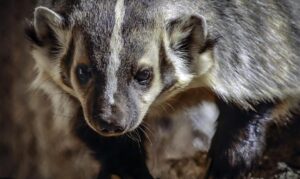
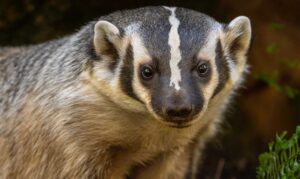
Habitat
Grasslands, savannas, prairies, and parklands from Canada to Mexico in western North America.
Diet
Carnivorous, primarily eating squirrels, prairie dogs, voles, and mice. They will also eat birds, snakes, other reptiles, insects, some fruit, corn, and grain.
Physical Characteristics
Body length is 2 to 3 feet. Weight ranges from 8 to 25 pounds. Males are 25 percent larger than females.
LOCATION WITHIN THE ZOO
You’ll find this animal in the Winnick Family Children’s Zoo. See Zoo Map.

